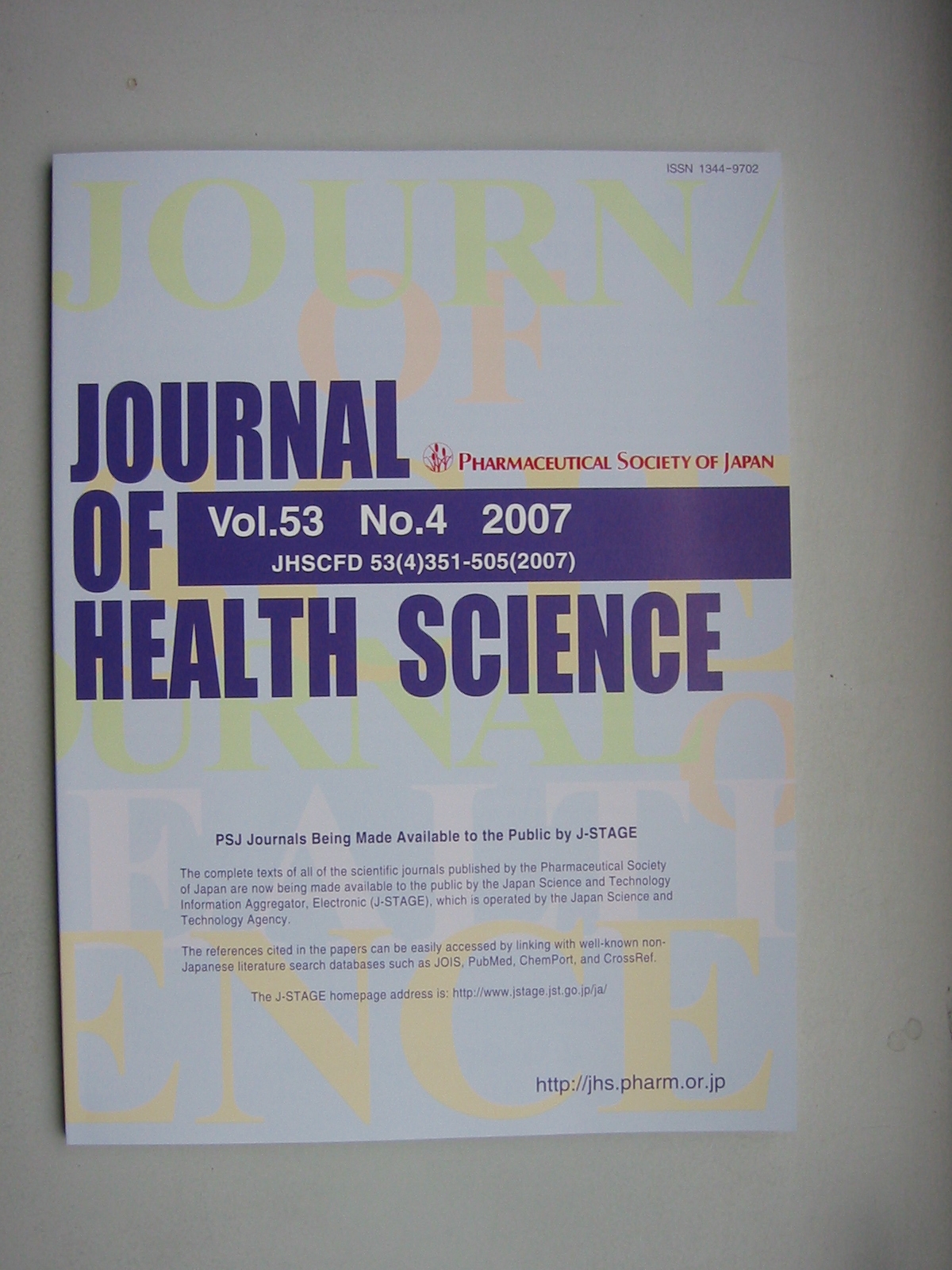Volume 53, Issue 3
Displaying 1-16 of 16 articles from this issue
- |<
- <
- 1
- >
- >|
MINIREVIEWS
-
2007Volume 53Issue 3 Pages 251-256
Published: 2007
Released on J-STAGE: June 01, 2007
Download PDF (302K) -
2007Volume 53Issue 3 Pages 257-262
Published: 2007
Released on J-STAGE: June 01, 2007
Download PDF (176K)
REGULAR ARTICLES
-
2007Volume 53Issue 3 Pages 263-270
Published: 2007
Released on J-STAGE: June 01, 2007
Download PDF (364K) -
2007Volume 53Issue 3 Pages 271-274
Published: 2007
Released on J-STAGE: June 01, 2007
Download PDF (81K) -
2007Volume 53Issue 3 Pages 275-281
Published: 2007
Released on J-STAGE: June 01, 2007
Download PDF (196K) -
2007Volume 53Issue 3 Pages 282-290
Published: 2007
Released on J-STAGE: June 01, 2007
Download PDF (485K) -
2007Volume 53Issue 3 Pages 291-301
Published: 2007
Released on J-STAGE: June 01, 2007
Download PDF (549K) -
2007Volume 53Issue 3 Pages 302-310
Published: 2007
Released on J-STAGE: June 01, 2007
Download PDF (370K) -
2007Volume 53Issue 3 Pages 311-319
Published: 2007
Released on J-STAGE: June 01, 2007
Download PDF (1764K)
RESEARCH LETTERS
-
2007Volume 53Issue 3 Pages 320-324
Published: 2007
Released on J-STAGE: June 01, 2007
Download PDF (120K) -
2007Volume 53Issue 3 Pages 325-328
Published: 2007
Released on J-STAGE: June 01, 2007
Download PDF (150K) -
2007Volume 53Issue 3 Pages 329-331
Published: 2007
Released on J-STAGE: June 01, 2007
Download PDF (132K) -
2007Volume 53Issue 3 Pages 332-338
Published: 2007
Released on J-STAGE: June 01, 2007
Download PDF (363K) -
2007Volume 53Issue 3 Pages 339-343
Published: 2007
Released on J-STAGE: June 01, 2007
Download PDF (309K) -
2007Volume 53Issue 3 Pages 344-346
Published: 2007
Released on J-STAGE: June 01, 2007
Download PDF (181K) -
2007Volume 53Issue 3 Pages 347-350
Published: 2007
Released on J-STAGE: June 01, 2007
Download PDF (206K)
- |<
- <
- 1
- >
- >|
